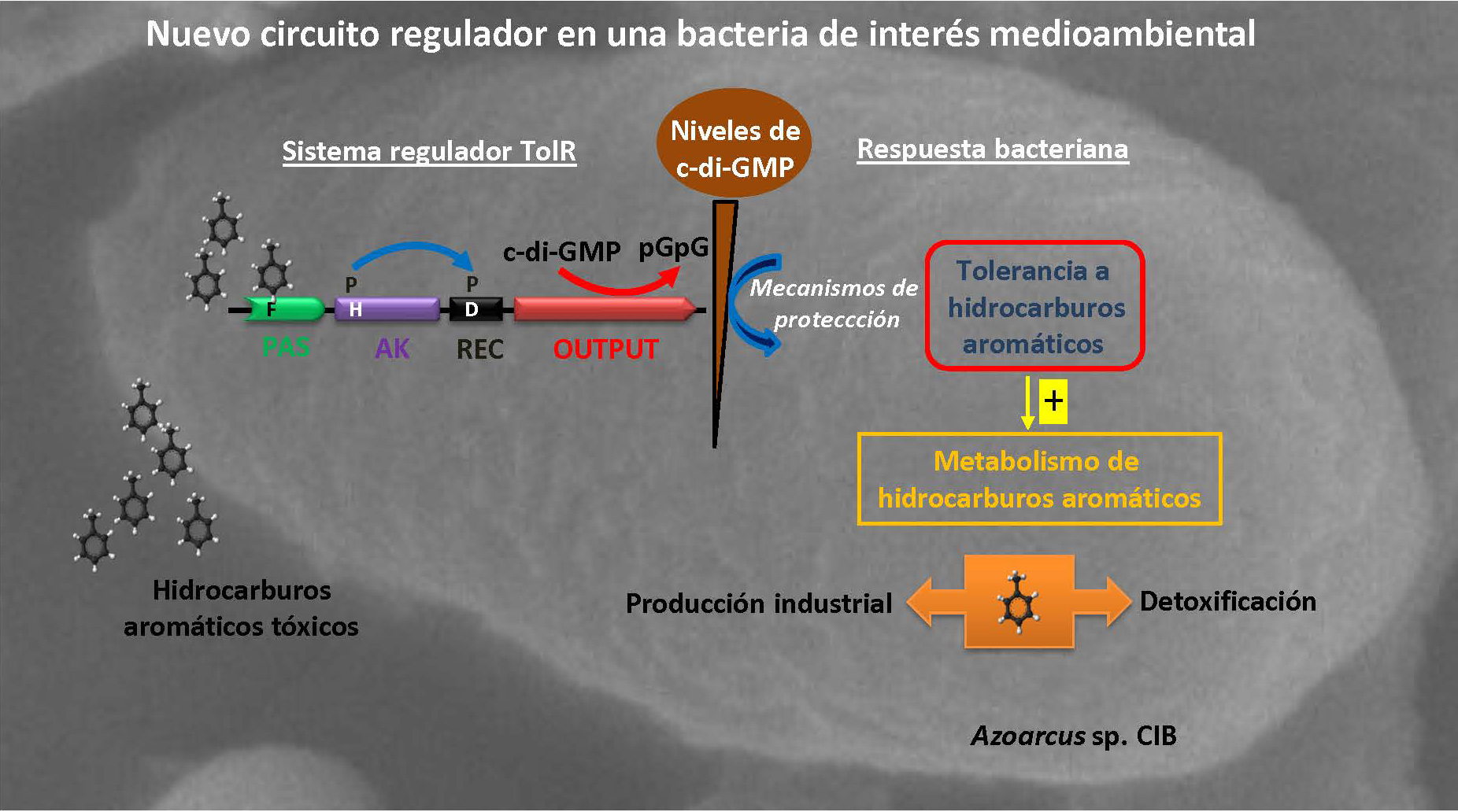
Some bacteria have a remarkable ability to grow on toxic aromatic hydrocarbons under anaerobic conditions. Although bacteria have evolved cellular mechanisms to cope with hydrocarbon toxicity, it was unclear if signal transduction systems might exist to coordinate a protective response. Spanish scientists led by Dr. Eduardo Díaz (Centro de Investigaciones Biológicas-CSIC, Madrid) and in collaboration with the group of Prof. Caroline S. Harwood (Universidad de Washington, Seattle, USA), have discovered and characterized a new signal transduction system, the TolR protein, involved in the resistance to toxic aromatic hydrocarbons in a bacterium, Azoarcus sp. CIB, able to degrade these compounds anaerobically. The TolR protein, a hybrid two-component regulatory system, constitutes the first biological system described that is able to detect aromatic hydrocarbons, such as toluene and related compounds, and initiate an intramolecular phosphotransfer to the response regulator domain that results in the hydrolysis of the cyclic di-GMP molecule (c-di-GMP). The c-di-GMP is a second messenger found universally in bacteria and that controls diverse functions including biofilm formation and virulence in pathogens. The work recently published in Proceedings of the National Academy of Sciences (PNAS), reveals a new role for c-di-GMP in bacterial physiology controlling the resistance to toxic concentrations of aromatic hydrocarbons. A drop in c-di-GMP protects cells from toluene toxicity. These studies pave the way of new strategies for the rational design of microorganisms able to tolerate toxic concentrations of aromatic hydrocarbons, having important biotechnological applications for detoxification and/or bioconversion of contaminants for a sustainable bioeconomy.
Zaira Martín-Moldes, Blas Blázquez, Claudine Baraquet, Caroline S. Harwood, María T. Zamarro, and Eduardo Díaz. Degradation of cyclic diguanosine monophosphate by a hybrid two-component protein protects Azoarcus sp. CIB from toluene toxicity. Proceedings of the National Academy of Sciences (PNAS). DOI: 10.1073/pnas.1615981113.

